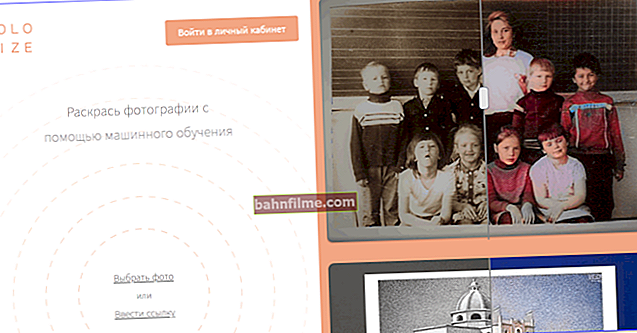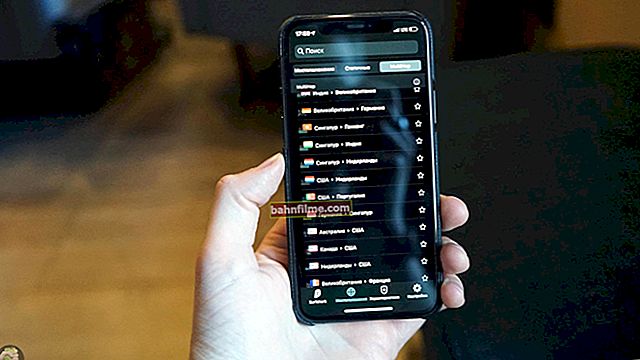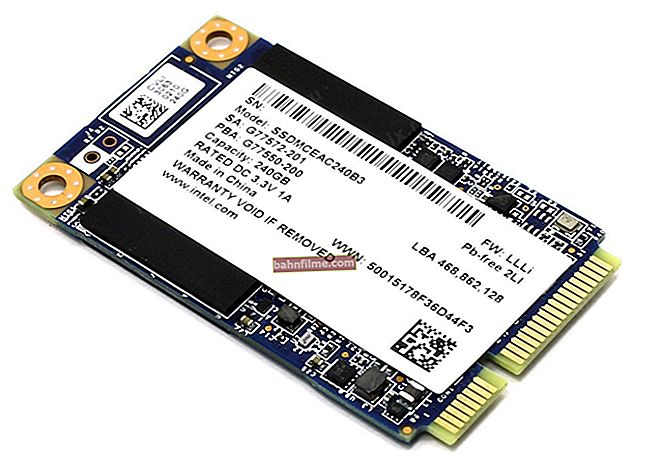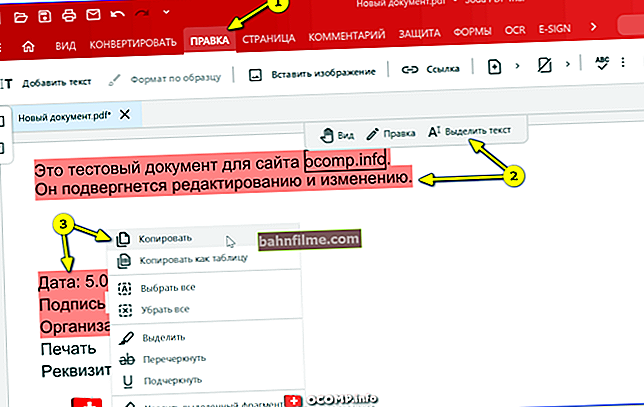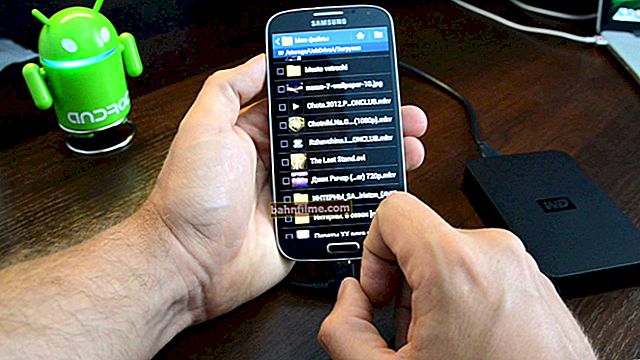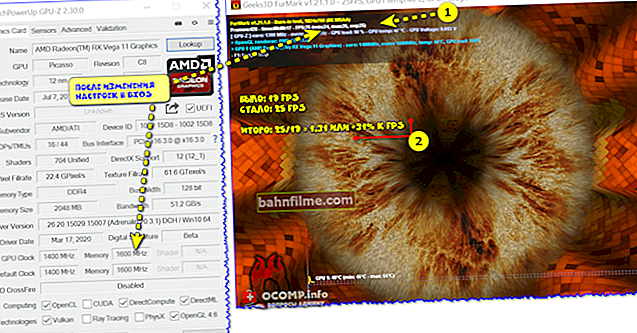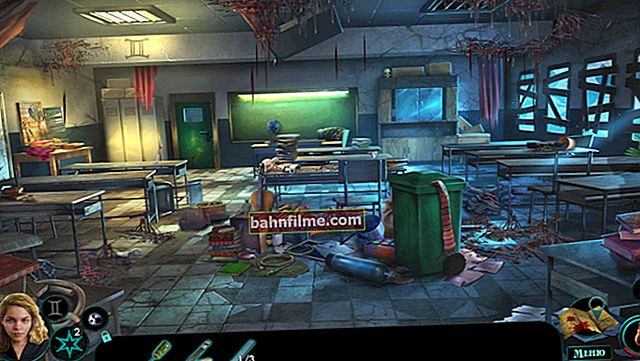 Good day!
Good day!
The topic of space in recent years has become more and more relevant and popular (perhaps this is due to various novelties in films and games, Elon Musk with his "Tesla", various assumptions from scientists ...). 👀
One way or another, but in order to get to know the planets around us better, it is not necessary to go to the planetarium (especially since not every city in our country has one). Now there are quite a few projects and programs that, based on the images and calculations of scientists, have recreated a 3D view of the solar system (as close as possible to reality).
Actually, in this article I will just give several similar applications (they will definitely be enough for the first acquaintance with space and astronomy). ☝
So...
*
Ways to view images of the Earth, Moon and other planets from space
Option 1
One of the most realistic virtual 3D planetariums is the Stellarium project (I already talked about it in one of my past posts). This virtual telescope allows you to get acquainted with hundreds of planets around us, find out the real dimensions and distance between celestial bodies, estimate the scale of the galaxy ...

Earth and Venus are close to the Sun, and Saturn is very far away! / Stellarium
👉 To help!
Stellarium review and setup: how to use this virtual telescope: //ocomp.info/smotret-kosmos-svoimi-glazami.html
Option 2
Google Earth Project
Site 1: //www.google.com/intl/ru/earth/
Site 2: //earth.google.com/web/
This project from Google allows you to get to know more about our planet - the Earth. You can "turn" the planet to any of the sides, and then bring it closer and see what is there at this "point".
In general, this recreated Earth in 3D allows you to learn and see with your own eyes many sights, literally in two mouse clicks ...

Google Earth - a snapshot of the earth from space (this is 3D, the planet can be rotated!)
For example, by clicking on the icon "Magnifiers" on the left in the menu - just enter 1-2 words into the query, and Google will quickly offer everything that it knows (in my example, I decided to look at the Statue of Liberty - it's a matter of 1 sec. 👌). Moreover, a small information window will appear on the right with a description of what you are watching ...
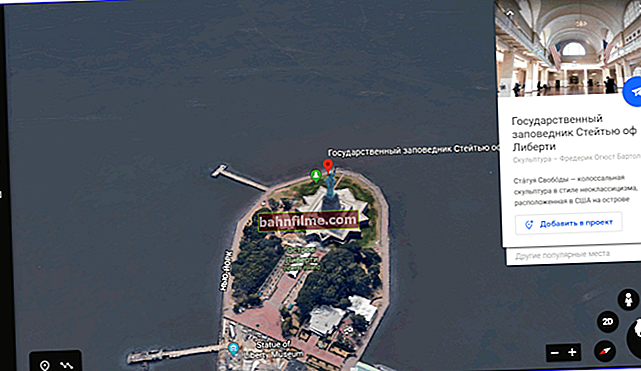
Statue of Liberty - 3D View (Side and Top View)
Option 3
WorldWide Telescope
Developer site: //www.worldwidetelescope.org/Download/
This program is a virtual telescope of the universe (best of all, of course, it represents our solar system). The WorldWide Telescope developers used in their creation not just images from conventional ground-based telescopes, but also from the space telescope - Hubble (Hubble, probably, many have heard about it in the news).
Pay attention to the top panel: to view a particular planet - you just need to click on its icon.

WorldWide Telescope - planet Mars
In addition to manually viewing the planets you are interested in, I recommend that you definitely visit the section "Guide" (Excursion). In it you can find interesting pictures and stories on many interesting issues: is there life on Mars, and where did humanity come from, etc.

Guide - section of excursions on space issues
Well, it should be noted that in addition to some three-dimensional models, the program contains many real photographs and pictures on various topics. For example, you can look at what a black hole looks like, or footage from the Apollo mission. Many of the pictures look mesmerizing!

Pictures from the Apollo mission
Option 4
Celestia
Developers site: //celestia.space/ru/download.html
Celestia is a three-dimensional virtual planetarium in which the planets and stars known to mankind are relatively accurately recreated. According to the developers, Celestia has about 120 thousand stars!
All planets and objects in the program are made in 3D, and each of the bodies can be rotated with the mouse and see how it will look from different angles.
After the first launch of Celestia - go to the Navigation menu and open the Solar System catalog. Then, having selected the planet, click on the "Go" button ("Centered").

Mercury
Please also note that the program shows not only the planets, but also their satellites. For example, Saturn has more than a dozen of them (and you can zoom in on each of them and see what it is). In addition, Celestia will tell you its name and brief details.

Saturn and its satellites
By the way, Celestia also has a catalog of stars. This list is very extensive, and most likely, only astronomy lovers will be interested (many of the names of stars will say little to an ordinary user ...).

Star catalog
In general, despite the simplicity of the program, it allows you to fully get acquainted with the main celestial bodies of our solar system.
*
That's all for this sim today ...
Good luck!
👌
